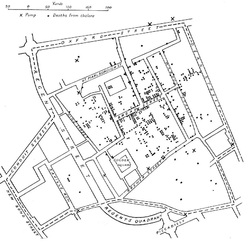If you are looking for any kind of consumable you are faced with many different choices in terms of functionality and price. For instance cars come in many different model options and a wide range of specifications. In the same way ArcGIS offers a range of software products to meet different user requirements.
ArcReader is available to download for free from the ESRI website. With ArcReader you can view and print digital maps created by others. You can also zoom to various parts of the map to see more detail.
ArcView, now known as ArcGIS for desktop basic, can create the maps that ArcReader can only view and print. With ArcGIS for desktop basic, you can query data to find answers to questions about distance and the relationships between the different layers with the map.
ArcEditor, now known as ArcGIS for desktop standard, has all the functionality of ArcGIS for desktop basic and has additional advanced features for editing and data creation. This version also enables multiple users to edit data simultaneously..
ArcInfo, now known as ArcGIS for desktop advanced, is the top of the range version with all the functionality of the others plus a full range of spatial analysis tools. All these products share a common user interface and can freely exchange data and maps.
GIS involves mainly two types of activity. Map creation, editing and spatial analysis on the one hand and database design and management on the other. ArcMap handles map creation and analysis and ArcCatalog is the database management application.
Besides these products ESRI has many other specialist products to meet the needs of GIS professionals whatever their discipline.
Besides the desktop ESRI also has products for users in the field: MobileGIS. ArcGIS for Server for internet applications. ArcSDE (Spatial Database Engine) to handle links with a variety of database systems and allows users to share and edit centrally held geographic data.
Finally ArcGIS engine makes it is possible for developers to embed ESRI software within their own software in order to give their users GIS functionality.

 RSS Feed
RSS Feed